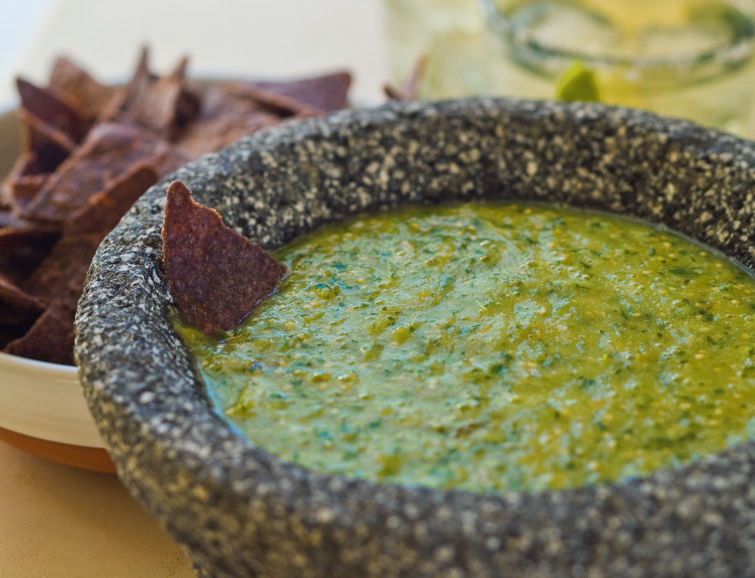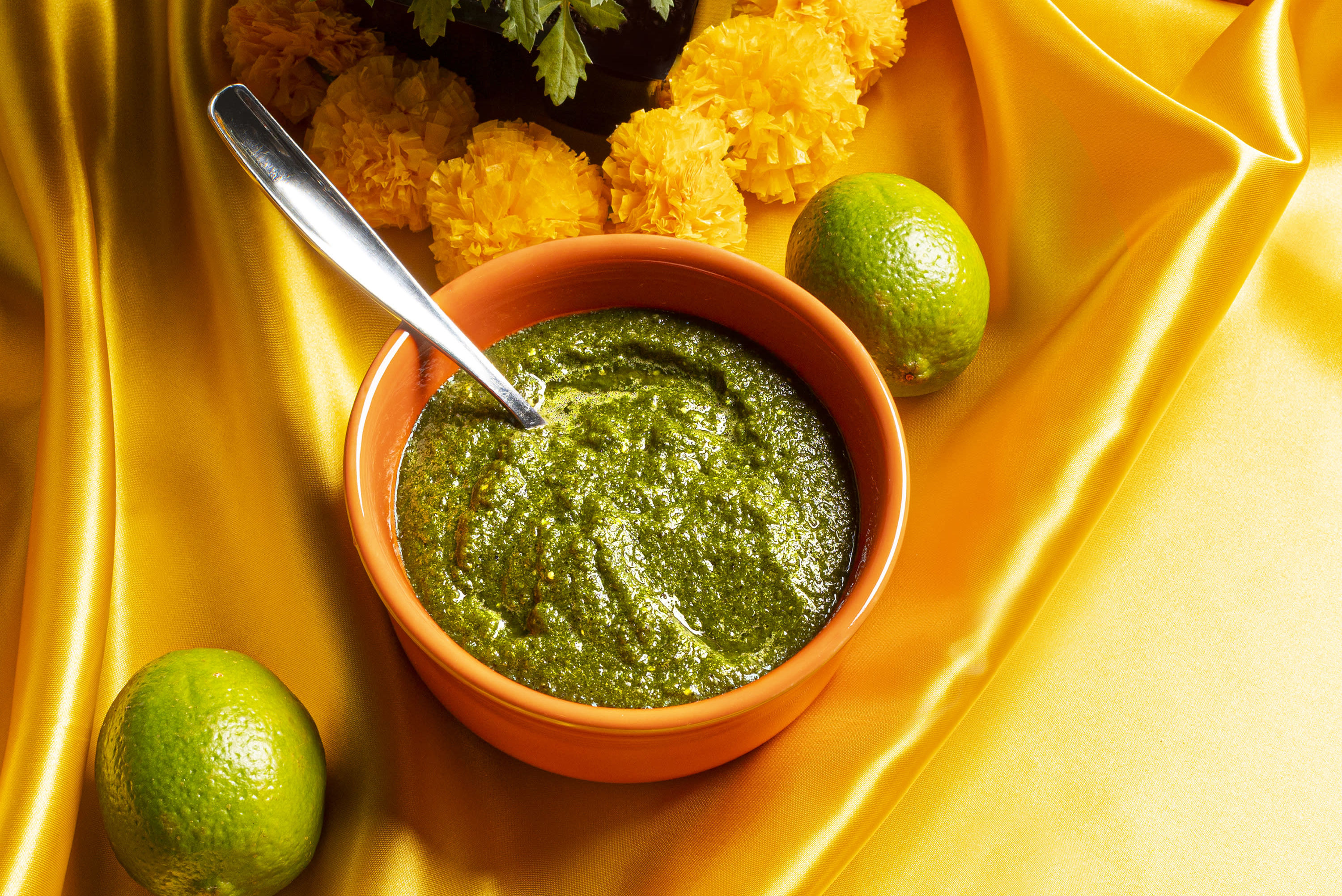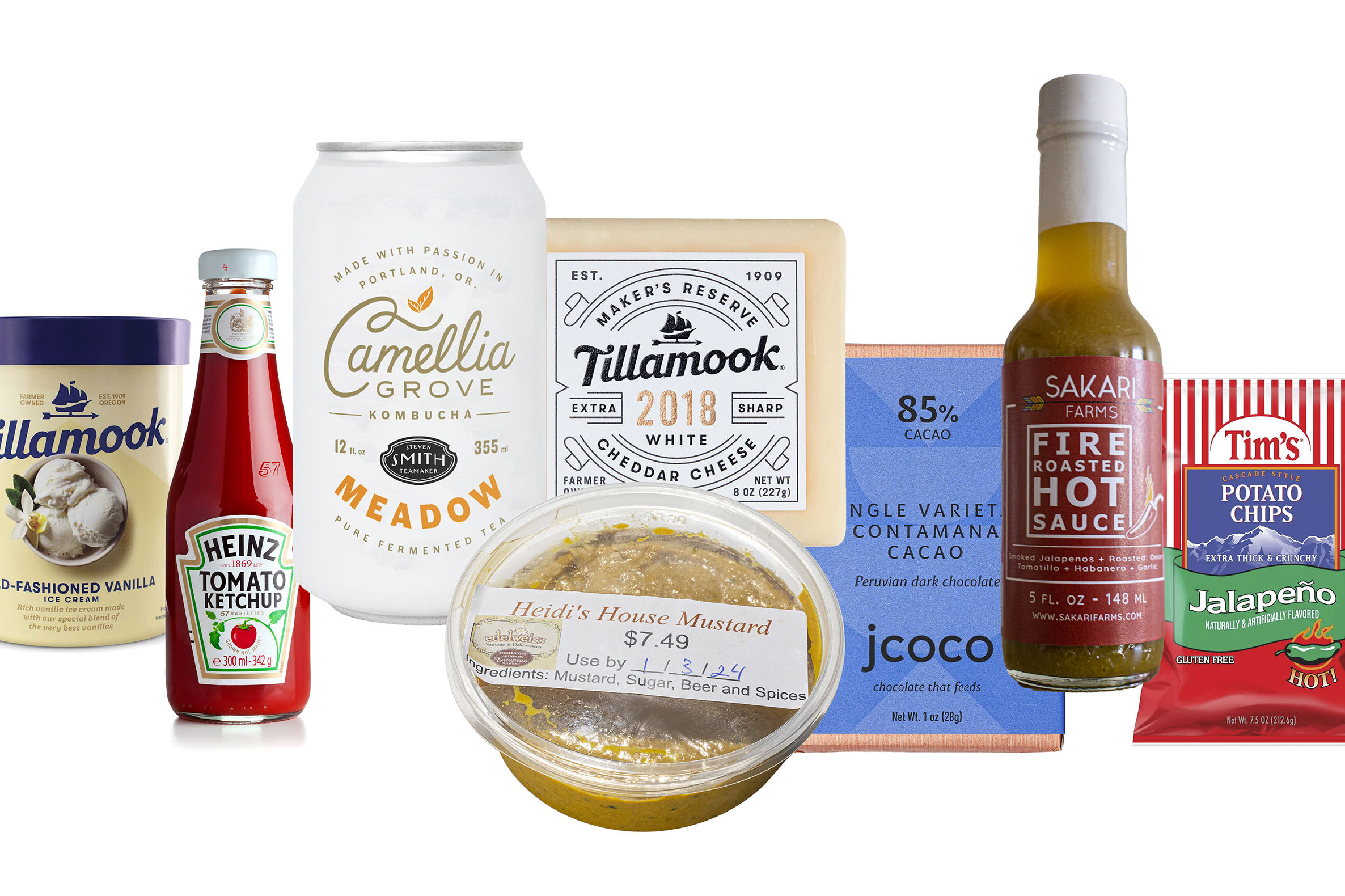¿Por Qué No?'s Salsa Verde, Revealed

Image: Lara Ferroni
At the risk of discrediting my reputation as a food writer, I’ll admit that I buy salsa in a jar. I’ll also admit that I never tasted an avocado until I was 16. And a tomatillo didn’t cross my path until 14 years later, when a Mexican friend who lived in El Paso, Texas, taught me how to make his version of guacamole. Into it he threw a diced…what was that? Green tomato?
“Tomatillo,” he said, and gave me a sliver of the silvery-green fruit.
As I bit into it, my eyes squinched from the sourness. It tasted like an unripe tomato. Why was he putting that in?
“Just wait,” he said, and proceeded to make what to this day remains my gold standard for guacamole.
But that, I figured, was all I needed to know about tomatillos, because, frankly, I still found them intimidating to work with, what with the papery husks that you have to peel from the sticky flesh, not to mention their intense astringency. Even after I moved to Portland and saw them everywhere—the province of Hispanic markets not so long ago, they now can be purchased at Fred Meyer, Safeway, you name it—I never bought them unless I was making guacamole.
Then I tasted the salsa verde at ¿Por Qué No?, a bustling cantina on N Mississippi Avenue, and thought, Why am I always buying salsa in a jar when this salsa is lemony and smooth, vibrant and clean? Why not make it fresh from tomatillos, just as Josh Kimball, chef at the colorful restaurant, does each morning?
Kimball confesses that he, too, had no idea what to do with the fruit the first time he encountered it in college. But over the years, he discovered how to braise chicken and fish in tomatillo salsas. A Guatemalan co-worker also taught him that their husks came in handy: Nopales, or prickly pear cactus pads, lose some of their sliminess if you boil them with tomatillo husks. The husks are also used to impart flavor to white rice and to tenderize meats.
When choosing tomatillos from the store, select green fruits that fill and even break through their papery skins. Stored in the refrigerator, they will last about three weeks.
“I usually blend them up with honey and salt, cilantro and onion, and you can serve that on anything,” Kimball says.
On anything—an impressively universal endorsement for an ingredient that’s seemed exotic for too long.
Salsa Verde from ¿Por Qué No?
Josh Kimball, the chef at ¿Por Qué No? , provided this recipe for salsa verde that can be eaten with tortilla chips, but you can also braise chicken or fish in it. Makes about 5 cups.
- 5 lbs tomatillos, husks removed
- 3 jalapeños
- 3 cloves garlic, peeled
- 1/2 small onion, roughly chopped
- 1/2 bunch cilantro, stems removed, leaves chopped
- 2 tbsp honey
- Salt to taste
(1) Preheat oven to 400 degrees.
(2) Place ¹/³ of the tomatillos, along with jalapeños, garlic, and onion, on an oiled baking sheet and roast in oven. Remove ingredients from oven when they become slightly charred (tomatillos should be removed before the skins burst, about 5 minutes; other ingredients will take 10 minutes).
(3) Place remaining tomatillos in a large pot with cold water. Bring to a boil, and immediately turn off the heat. Allow tomatillos to sit until they turn a darker green, but not so long that they burst their skins, about 3 minutes.
(4) In a blender, purée the roasted tomatillo mixture and drained, boiled tomatillos with cilantro, honey, and salt until smooth. For a chunkier salsa, use a food processor and pulse until you reach the desired consistency.




